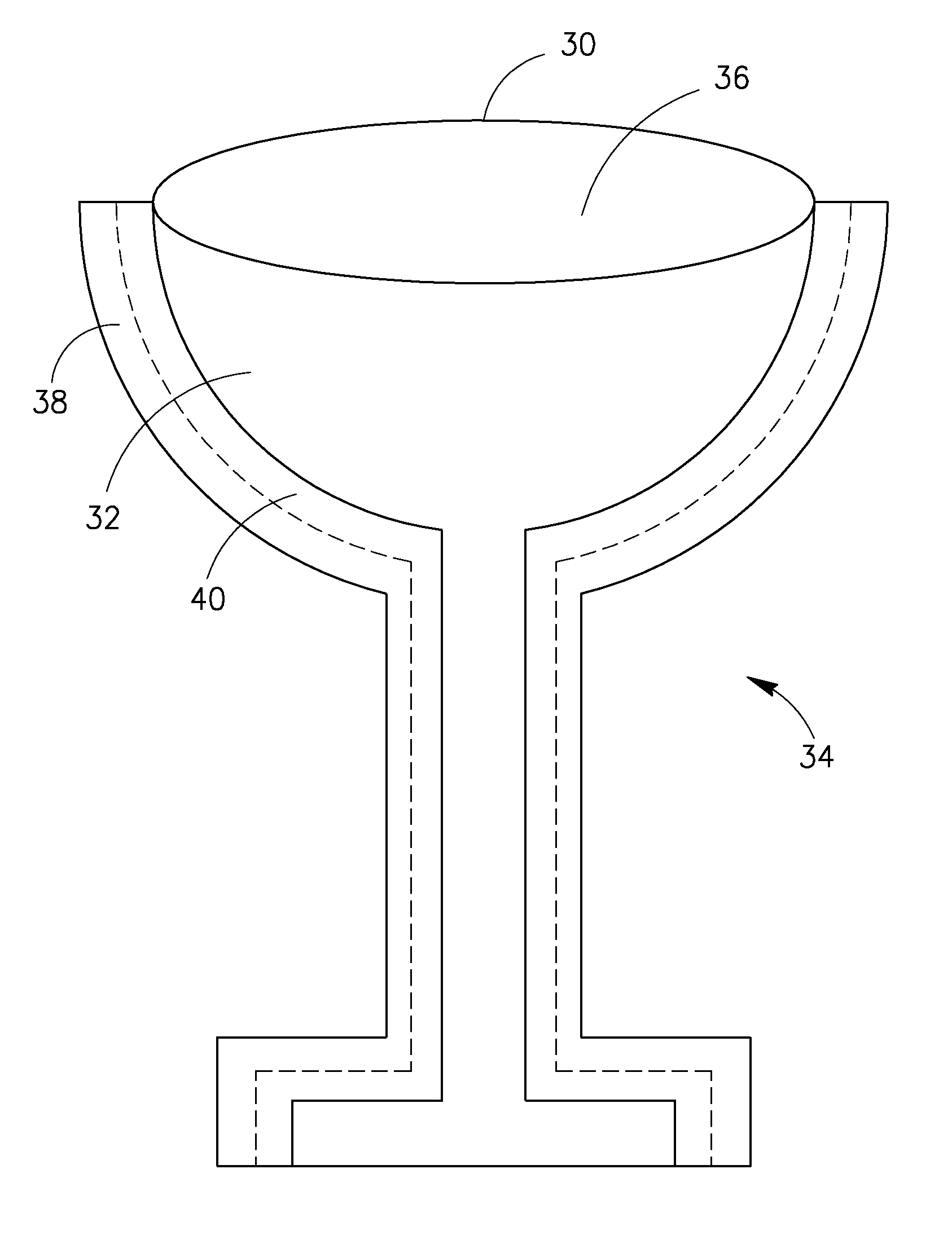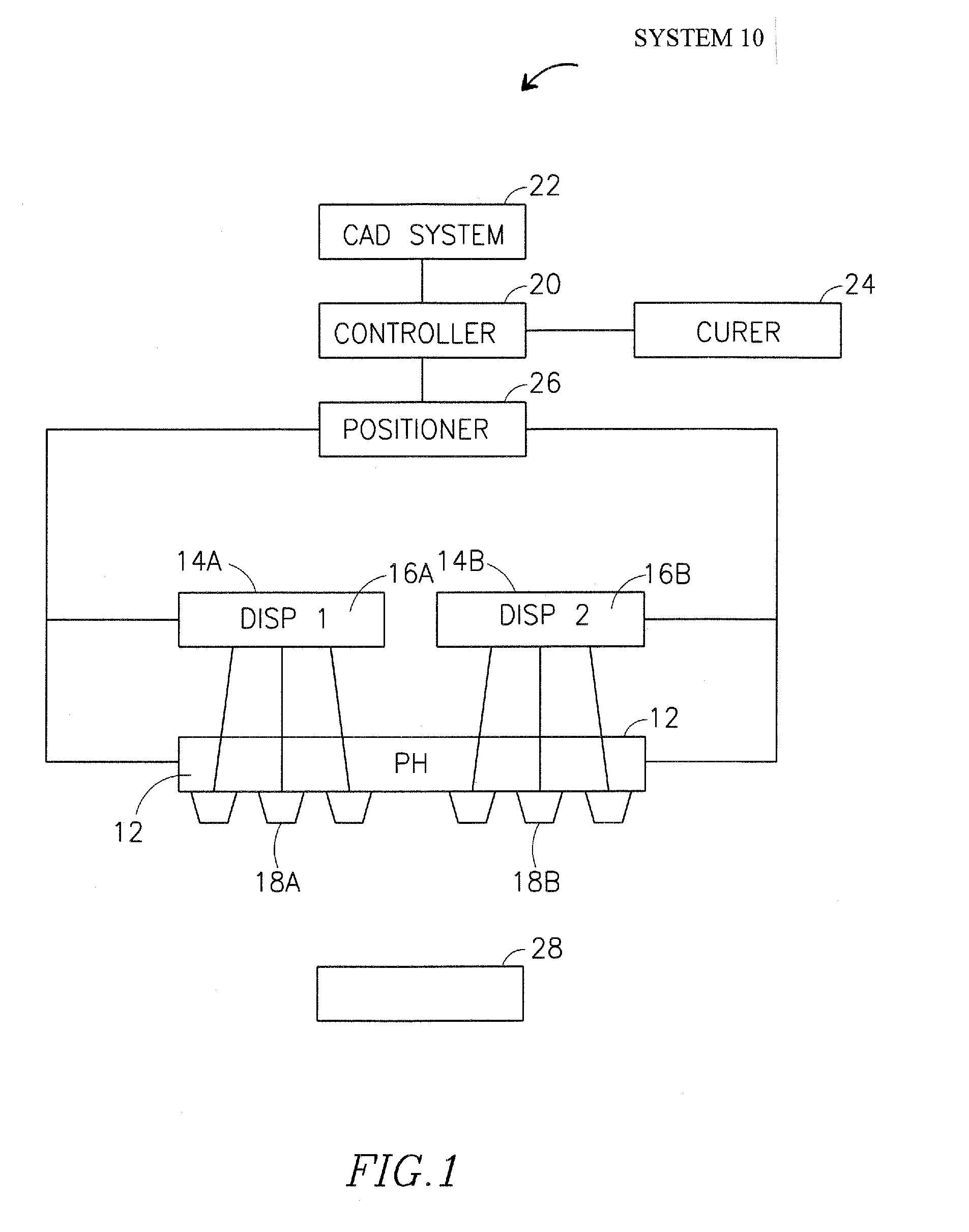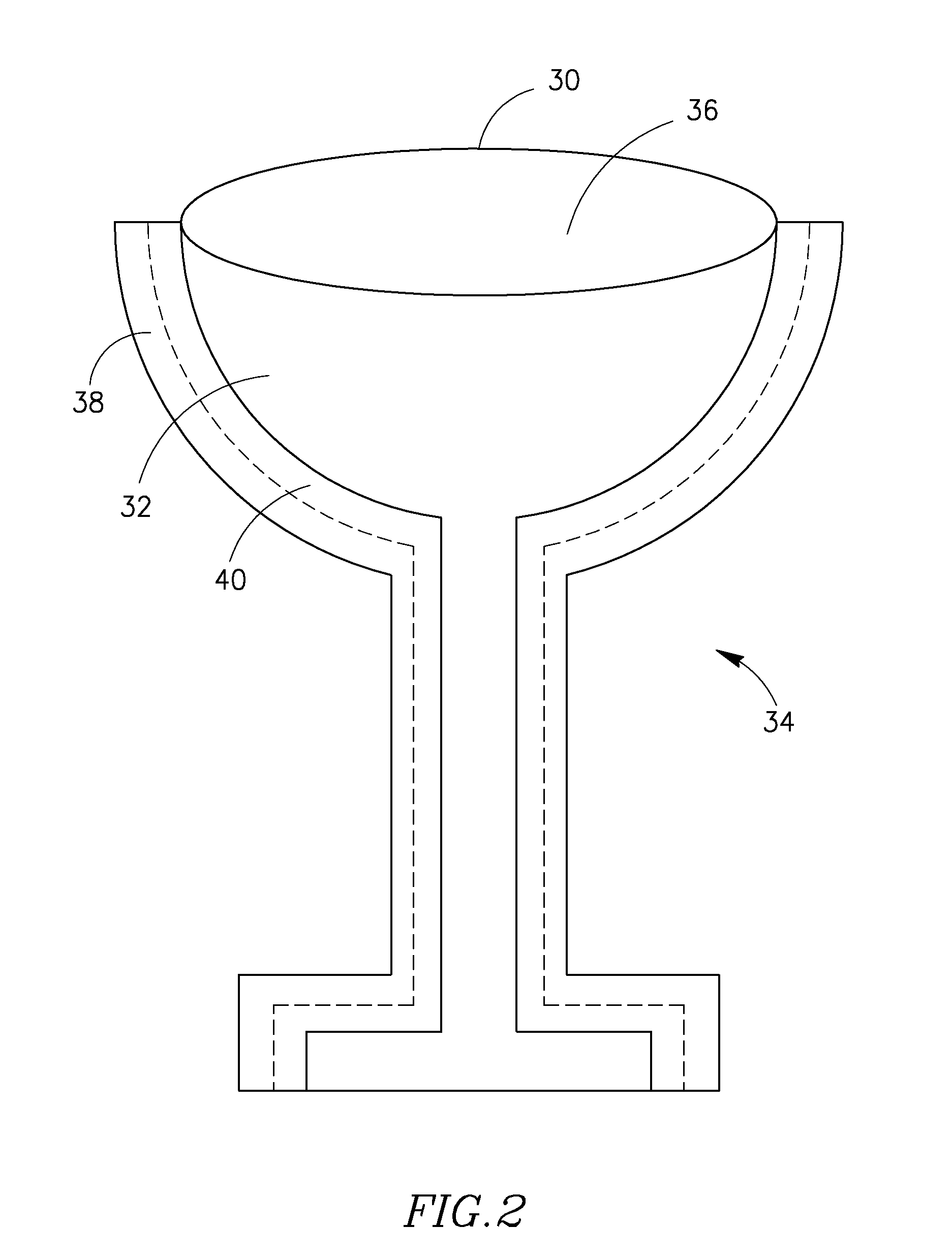Compositions and methods for use in three dimensional model printing
a three-dimensional model and composition technology, applied in the field of three-dimensional object building, can solve the problems of additional time and cost, and achieve the effects of reducing the modulus of elasticity, and reducing the cost of printing
- Summary
- Abstract
- Description
- Claims
- Application Information
AI Technical Summary
Benefits of technology
Problems solved by technology
Method used
Image
Examples
Embodiment Construction
[0071]The present invention relates to compositions for use in the manufacture of three-dimensional objects, and to compositions for use as support and / or release material in the manufacture of three-dimensional objects. The present invention further relates to a method for the preparation of a three-dimensional object by three-dimensional printing, using the above-mentioned compositions, and to a three-dimensional object obtained by the method.
[0072]The composition for use in the manufacture of the three-dimensional objects may include, inter alia, at least one reactive component, at least one photo-initiator, at least one surface-active agent and at least one stabilizer. The composition may be formulated so as to be compatible for use with ink-jet printers and to have a viscosity at room temperature above 50 cps.
[0073]The composition for use as a support and / or second interface material in the manufacture of the three-dimensional objects may include, inter alia, at least one non-r...
PUM
| Property | Measurement | Unit |
|---|---|---|
| Glass Transition Temperature | aaaaa | aaaaa |
| Glass Transition Temperature | aaaaa | aaaaa |
| Glass Transition Temperature | aaaaa | aaaaa |
Abstract
Description
Claims
Application Information
 Login to View More
Login to View More - R&D
- Intellectual Property
- Life Sciences
- Materials
- Tech Scout
- Unparalleled Data Quality
- Higher Quality Content
- 60% Fewer Hallucinations
Browse by: Latest US Patents, China's latest patents, Technical Efficacy Thesaurus, Application Domain, Technology Topic, Popular Technical Reports.
© 2025 PatSnap. All rights reserved.Legal|Privacy policy|Modern Slavery Act Transparency Statement|Sitemap|About US| Contact US: help@patsnap.com



